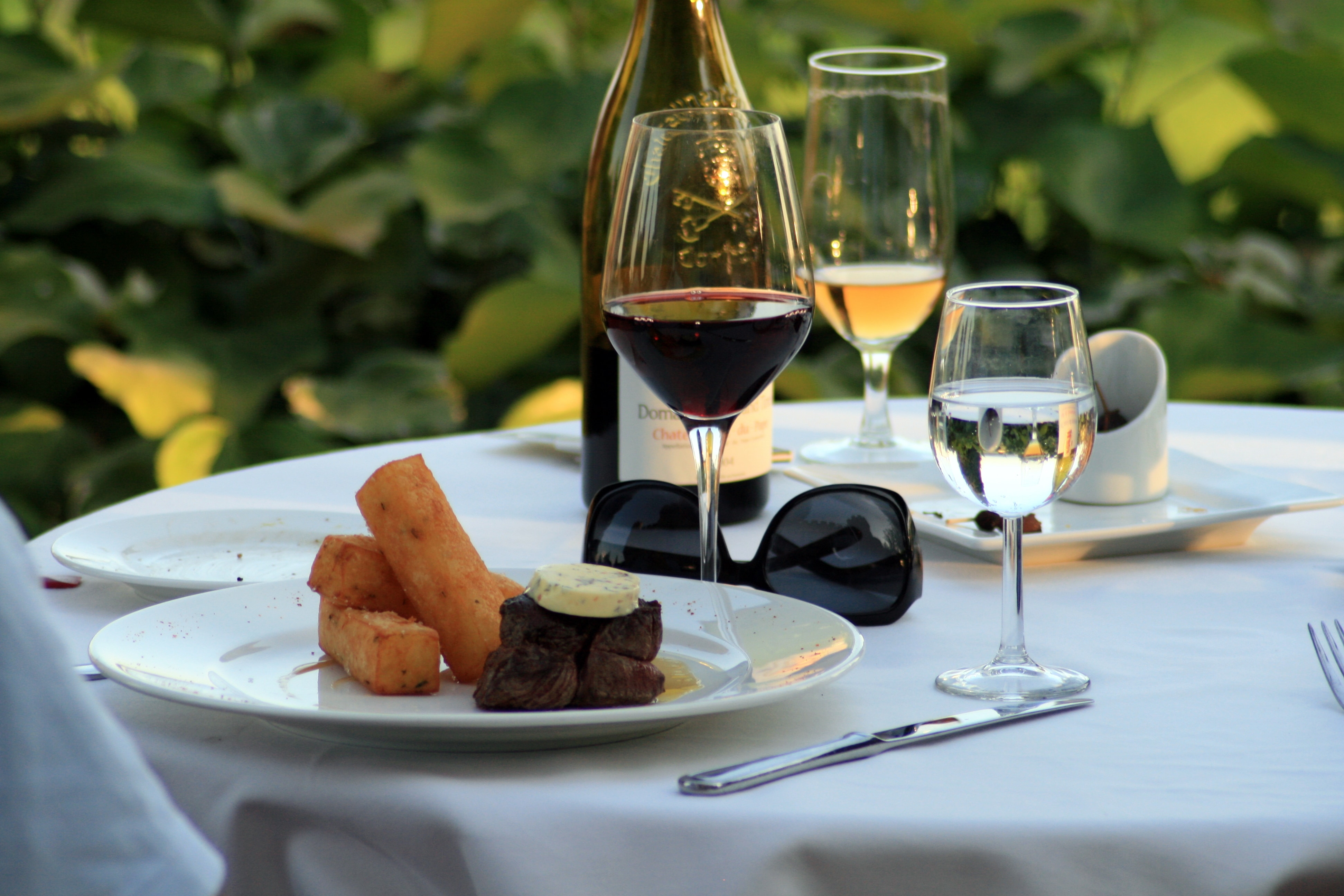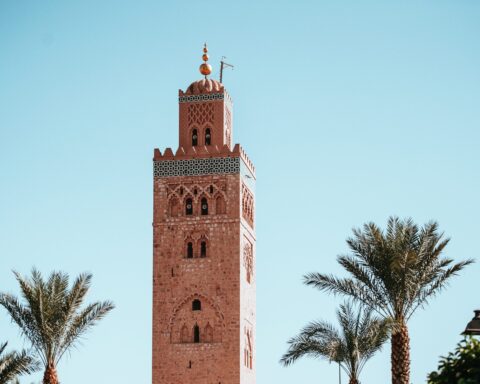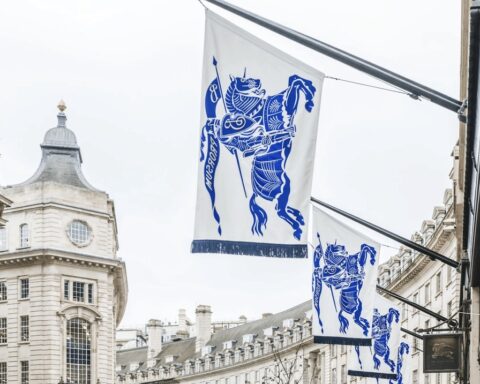[vc_row njt-role=”people-in-the-roles” njt-role-user-roles=”administrator,editor,author,armember”][vc_column][vc_column_text]
Despite the hard blow of successive confinements and the closure of establishments throughout France, French gastronomy has not said its last word and is moving towards a more sustainable approach.
If the health crisis has not been beneficial for many actors in the restaurant industry, it will at least have put local sourcing and the subject of food sovereignty back on the agenda, two subjects at the heart of sustainable gastronomy as defined by the FAO (Food and Agriculture Organization) in 2010. “Sustainable diets help protect and respect biodiversity and ecosystems, are culturally acceptable, economically equitable and accessible, affordable, nutritionally safe and healthy, and optimize natural and human resources.”
In 2020, according to an IFOP study, 74% of French people cited at least one CSR (corporate social responsibility) dimension as a criterion for choosing a catering establishment, topping the list: displaying product traceability, favoring local producers and limiting food waste.
Sourcing locally
When it comes to ecology, it is in the restaurant owners’ best interest to source locally. Given the financial and ecological costs of fuel, the fewer kilometers the product travels, the better. It will also be possible to ensure the traceability of the product and its freshness, making it possible to speak about it better and to reassure the consumer.
“Restaurants are businesses whose activities can have a considerable positive impact on the environment and the local communities with which they are involved,” explains Gwendal Poullenec, international director of the Michelin Guide. In fact, it is to highlight the eco-responsible commitment of certain addresses that the famous guide has launched the “sustainable gastronomy award” in 2019, followed by a “green star” in 2020.
Out of 15,000 restaurants listed in the world, nearly 300 establishments are now awarded this distinction, whose aim is to “raise awareness“. In addition, “Green stars have become a competitive argument for restaurants” says the Michelin guide. Although there are no criteria to be met in order to be awarded this star, the guide nevertheless salutes virtuous initiatives such as seasonality and locality in the plate.
Voir cette publication sur Instagram
Less or more meat is also the bet of some restaurants, because more than 14% of global greenhouse gas emissions come from livestock farming, according to the FAO. Nadia Sammut, chef of the Auberge La Fenière, in the Luberon, has made up her mind and no longer serves meat in her gastronomic restaurant. However, she continues to serve them in her bistro, “to support the farmers and help them develop their methods“.
More sustainable approaches
Since July 1, 2021, restaurants are required to offer a “doggy bag” to their customers, if they have not finished their dish and want to take the leftovers to eat later. A huge step to avoid food waste.
“The food transition must be a cultural transition before being a technical transition, social norms must evolve, and sustainable living must be desirable,” says Elisabeth Laville, founder of the Utopies agency, a French think-tank specializing in supporting companies and brands for whom sustainable development is essential.
She proposes several solutions, including clear labels concerning the ecological commitment of restaurants. “The English were the first to launch a label for restaurants, in Scandinavia there is a specific ecolabel for restaurants, and in France this ecolabel already exists for hotels. But just about everywhere, we have collections of initiatives that are not very legible. (…) We need a level of commitment that is equal to the challenge we face,” she adds.
Read also > GASTRONOMY: HOW THE STARRED CHEFS PREPARED THEIR RECOVERY
Feature photo : © Wikimedia Commons[/vc_column_text][/vc_column][/vc_row][vc_row njt-role=”not-logged-in”][vc_column][vc_column_text]
Despite the hard blow of successive confinements and the closure of establishments throughout France, French gastronomy has not said its last word and is moving towards a more sustainable approach.
If the health crisis has not been beneficial for many actors in the restaurant industry, it will at least have put local sourcing and the subject of food sovereignty back on the agenda, two subjects at the heart of sustainable gastronomy as defined by the FAO (Food and Agriculture Organization) in 2010. “Sustainable diets help protect and respect biodiversity and ecosystems, are culturally acceptable, economically equitable and accessible, affordable, nutritionally safe and healthy, and optimize natural and human resources.”
In 2020, according to an IFOP study, 74% of French people cited at least one CSR (corporate social responsibility) dimension as a criterion for choosing a catering establishment, topping the list: displaying product traceability, favoring local producers and limiting food waste.
Sourcing locally
When it comes to ecology, it is in the restaurant owners’ best interest to source locally. Given the financial and ecological costs of fuel, the fewer kilometers the product travels, the better. It will also be possible to ensure the traceability of the product and its freshness, making it possible to speak about it better and to reassure the consumer.
[…][/vc_column_text][vc_cta h2=”This article is reserved for subscribers.” h2_font_container=”tag:h2|font_size:16|text_align:left” h2_use_theme_fonts=”yes” h4=”Subscribe now !” h4_font_container=”tag:h2|font_size:32|text_align:left|line_height:bas” h4_use_theme_fonts=”yes” txt_align=”center” color=”black” add_button=”right” btn_title=”I SUBSCRIBE !” btn_color=”danger” btn_size=”lg” btn_align=”center” use_custom_fonts_h2=”true” use_custom_fonts_h4=”true” btn_button_block=”true” btn_custom_onclick=”true” btn_link=”url:https%3A%2F%2Ftest2023.luxus-plus.com%2Fen%2Fsubscriptions-and-newsletter-special-offer-valid-until-september-30-2020-2-2%2F”]Get unlimited access to all articles and live a new reading experience, preview contents, exclusive newsletters…
Already have an account ? Please log in.
[/vc_cta][vc_column_text]Featured photo : © Wikimedia Commons[/vc_column_text][/vc_column][/vc_row][vc_row njt-role=”people-in-the-roles” njt-role-user-roles=”subscriber,customer”][vc_column][vc_column_text]
Despite the hard blow of successive confinements and the closure of establishments throughout France, French gastronomy has not said its last word and is moving towards a more sustainable approach.
If the health crisis has not been beneficial for many actors in the restaurant industry, it will at least have put local sourcing and the subject of food sovereignty back on the agenda, two subjects at the heart of sustainable gastronomy as defined by the FAO (Food and Agriculture Organization) in 2010. “Sustainable diets help protect and respect biodiversity and ecosystems, are culturally acceptable, economically equitable and accessible, affordable, nutritionally safe and healthy, and optimize natural and human resources.”
In 2020, according to an IFOP study, 74% of French people cited at least one CSR (corporate social responsibility) dimension as a criterion for choosing a catering establishment, topping the list: displaying product traceability, favoring local producers and limiting food waste.
Sourcing locally
When it comes to ecology, it is in the restaurant owners’ best interest to source locally. Given the financial and ecological costs of fuel, the fewer kilometers the product travels, the better. It will also be possible to ensure the traceability of the product and its freshness, making it possible to speak about it better and to reassure the consumer.
[…][/vc_column_text][vc_cta h2=”This article is reserved for subscribers.” h2_font_container=”tag:h2|font_size:16|text_align:left” h2_use_theme_fonts=”yes” h4=”Subscribe now !” h4_font_container=”tag:h2|font_size:32|text_align:left|line_height:bas” h4_use_theme_fonts=”yes” txt_align=”center” color=”black” add_button=”right” btn_title=”I SUBSCRIBE !” btn_color=”danger” btn_size=”lg” btn_align=”center” use_custom_fonts_h2=”true” use_custom_fonts_h4=”true” btn_button_block=”true” btn_custom_onclick=”true” btn_link=”url:https%3A%2F%2Ftest2023.luxus-plus.com%2Fen%2Fsubscriptions-and-newsletter-special-offer-valid-until-september-30-2020-2-2%2F”]Get unlimited access to all articles and live a new reading experience, preview contents, exclusive newsletters…
Already have an account ? Please log in.
[/vc_cta][vc_column_text]Featured photo © Wikimedia Commons[/vc_column_text][/vc_column][/vc_row]








